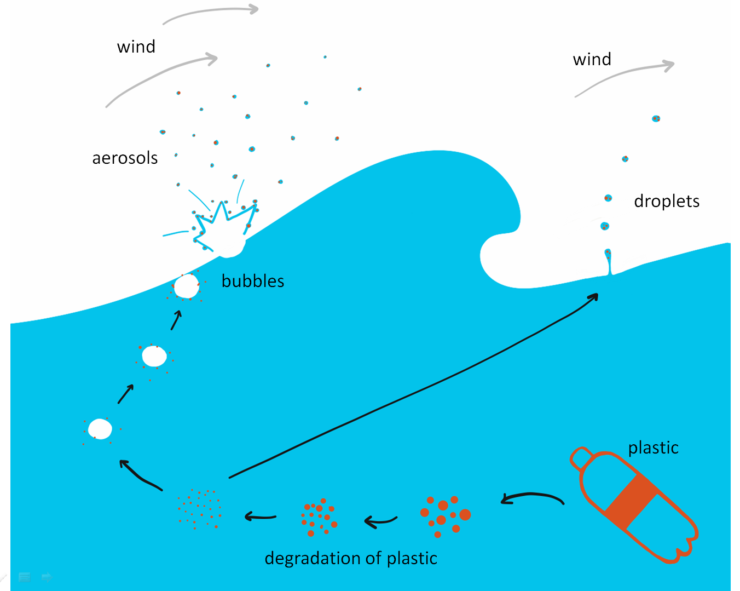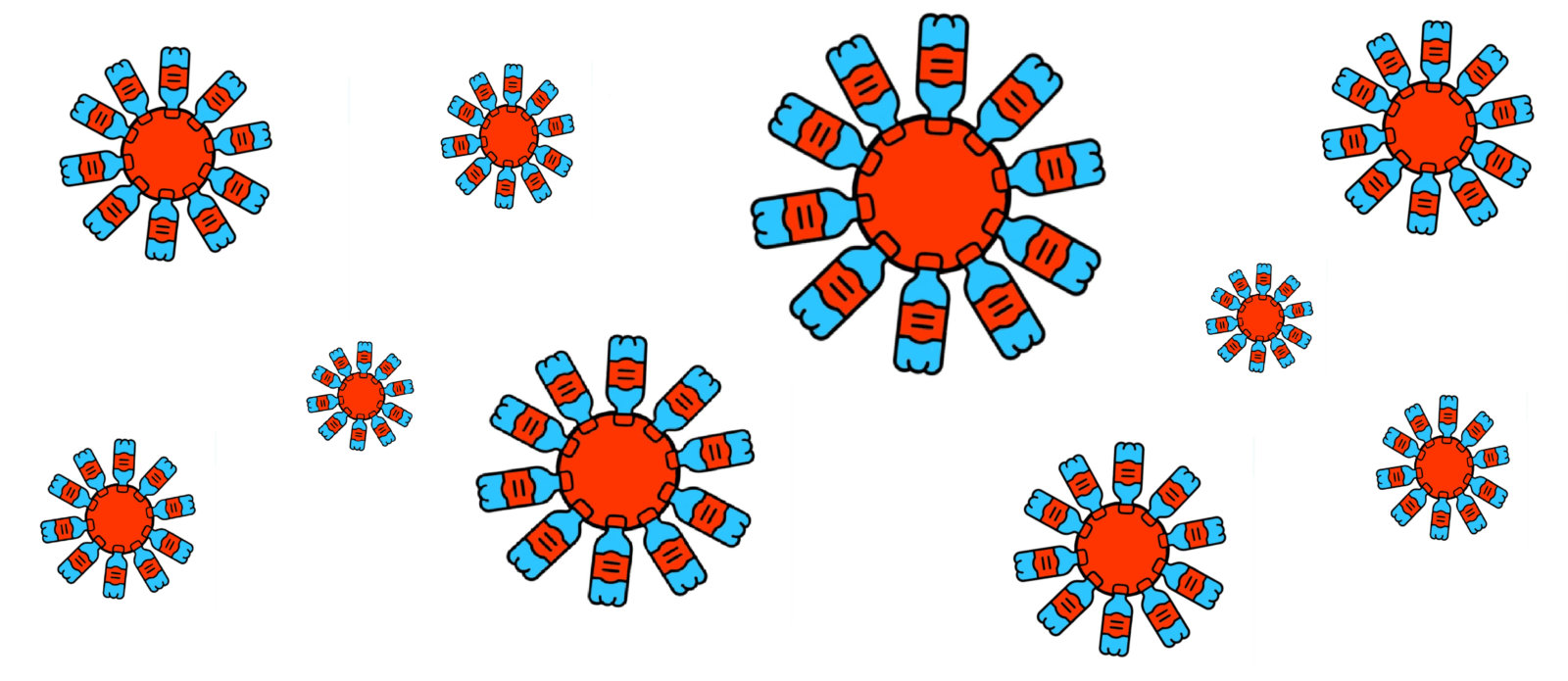Plastic Pollution
The dangers of the plastic “virus”
Plastic can be found everywhere these days. Even the oceans are now full of it. However, plastic can also end up in the human body. This is because plastic objects are broken down into tiny particles. Depending on their size, these particles are also referred to as micro- or nanoplastics. They are often so small (less than 5mm) that you cannot see them with the naked eye. This allows them to enter the body without notice. Nevertheless, we actually know very little about the (harmful) consequences of these intruders on our health. It has also recently become known that these invisible invaders can spread through the air just like viruses!
It has been known for years that the ocean is full of plastic. It was long thought that this would keep wandering in the ocean, but it’s not just in the ocean. It now also appears to be spreading via the air. The movements of the sea, such as waves, create small droplets. These droplets are called aerosols with a difficult word. Aerosols are not only made of water, but they can also contain other particles. Consider, for example, a virus, but micro- and nanoplastics can also be contained in these droplets. These aerosols are carried by the wind, causing the micro- and nanoplastics to spread through the air just like viruses.

The spreading of micro- and nanoplastics through the air. Schemetic view is based on a figure made by Steve Allen
At the moment, the greatest danger of plastic is perhaps that they penetrate your body (almost) unseen. Because the micro- and nanoplastics float in our air, it also means that you breathe them in! They can enter your body through the lungs. There are also other ways in which microplastics can enter the body. Via our gastrointestinal tract, for example. Of course there is no plastic bottle on our menu, but there is a good chance that your food also contains plastic. Many animals mistake plastic for food, so the fish or mussels on your plate have probably also eaten a piece of plastic. This does not mean that your body is packed with plastic, but that plastic particles can accumulate in the body is almost certain. That this accumulation is a problem, Barbro Melgert (researcher UMC Groningen) explains on the news page of the University of Groningen:
“Everything is a potential problem if it accumulates. Whether something is toxic or not depends on the dose. (…) So if we continue to use plastic in this way and release it into the environment, we will automatically get to the point where it becomes toxic. Because plastic does not disappear. It resembles the heavy metals that accumulate in the food chain, from micro-organism to vertebrates. In the end we eat a nice fish and we get an enormous amount of it. It is the same with those microplastics. “
It is not yet known exactly what the consequences and health risks of the microplastics are. That there are possible risks is confirmed by several experts. One of the suggestions is that the microplastics can cause (long-term) inflammation. This can lead to an increased production of harmful substances, such as reactive oxygen components. These components are normally formed as a byproduct in low amounts. When there is long-term inflammation, the cells experience stress and more of these reactive oxygen components are produced. This increased amount can cause damage to the DNA that can eventually even contribute to the development of cancer.
Besides the mirco- and nanoplastics themselves, there is another danger. Chemicals are used to ensure that plastic is strong and flexible. One of these is bisphenol A or BPA for short. This is a substance that is widely used in the production of plastic and is used in packaging materials and toys, among other things. Overexposure to BPA creates health risks, such as disruption of hormones. These substances “stick” to the micro- and nanoplastics and also end up in the environment when you leave a plastic bottle on the street and can cause additional problems.
Despite the fact that there is still a lot of research to be done into the precise dangers of micro- and nanoplastics, this does not mean that we can sit in our easy chair. Bart Koelmans (researcher and professor at Wageningen University) recently expressed his concerns in an interview with Resource:
“If we don’t act, the situation will become a risk within a few decades. It is alarming that the entire water column is a kind of soup made of all kinds of plastic. “
The use of plastic will therefore have to change drastically. The oceans must be cleaned, used plastic must be recycled (better) and, above all, less plastic must be used. That is why measures are also being taken in the Netherlands to tackle plastic pollution. Previously, the free plastic bags had already left the shops, but from next year the plastic plates, cutlery and straws will also have to die. Nobody wants to get into another “pandemic” because of the effects of the plastic “virus.”
Translated from Dutch

